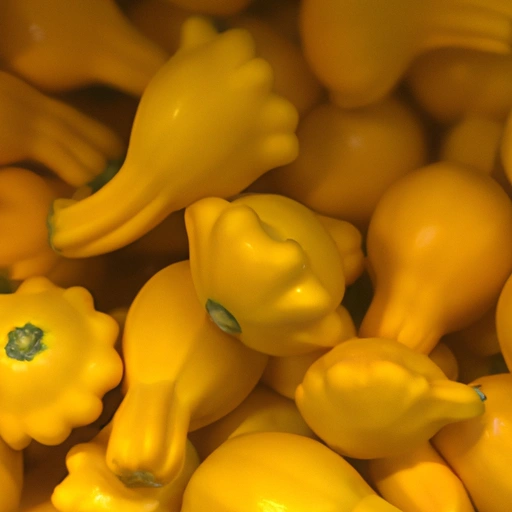Yellow Summer Squash
Description

Yellow summer squash, a tender and versatile vegetable, is cherished for its mild, slightly sweet flavor and bright color. It is a staple ingredient in many cuisines and can be prepared in a variety of ways to suit any palate.
Common uses
Yellow summer squash is often used in salads, sautés, stir-fries, and as a side dish. It can be grilled, roasted, steamed, or used in baking, making it a favorite for both savory and sweet applications.
Nutritional value
Calories
A typical yellow summer squash (about 196 grams or 1 cup sliced) contains approximately 33 calories (138 kJ).
Protein
It provides about 2.37 grams (0.084 oz) of protein per serving.
Fat
The fat content is low at around 0.61 grams (0.022 oz).
Carbohydrates
Carbohydrates are present at about 6.65 grams (0.235 oz), with a good amount of dietary fiber.
Vitamins
Yellow summer squash is rich in vitamin C, vitamin A, and several B vitamins, including B6, riboflavin, and folate.
Minerals
It also contains minerals like manganese, potassium, magnesium, and copper.
Health benefits
Yellow summer squash is high in antioxidants and nutrients that can support vision health, enhance digestion, and contribute to heart health. The presence of fiber helps in weight management and regulating blood sugar levels.
Potential risks
For individuals with certain food allergies or digestive issues, yellow summer squash should be consumed with caution. It is also important to moderate intake for those with kidney problems due to its potassium content.
Common recipes
Popular recipes using yellow summer squash include ratatouille, zucchini bread, vegetable stir-fries, and summer squash casseroles.
Cooking methods
Yellow summer squash can be cooked using methods like grilling, roasting, sautéing, and steaming, as well as being enjoyed raw in salads.
Pairing with other ingredients
It pairs well with fresh herbs, tomatoes, onions, garlic, cheese, eggs, and various meats or plant-based proteins.
Summary
Yellow summer squash is a flavorful and nutrient-rich vegetable that is highly adaptable in the kitchen. It can be incorporated into a wide range of dishes, adding both color and nutrition. Its low-calorie content makes it appealing for health-conscious individuals, and its array of vitamins and minerals contributes to a balanced diet.